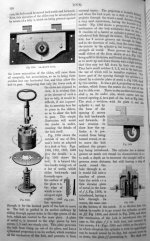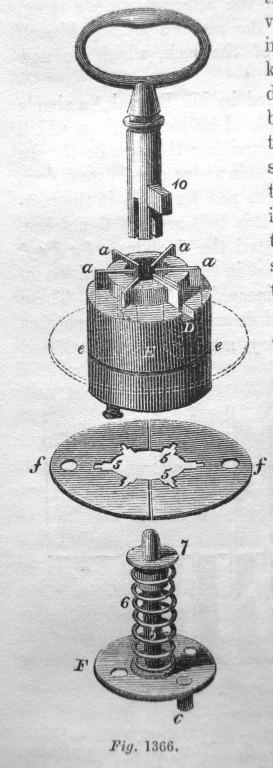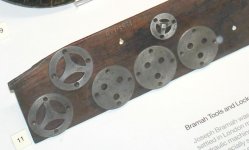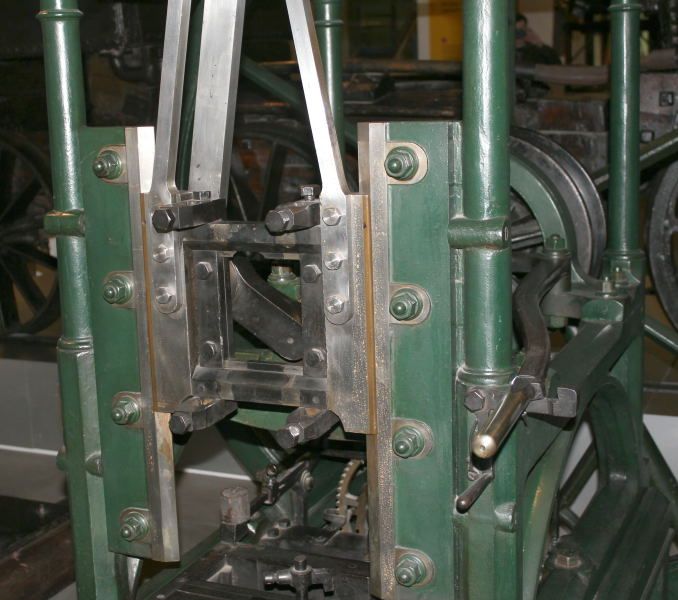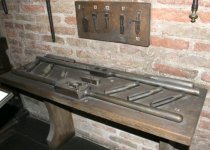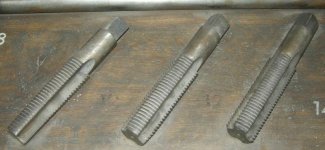Asquith
Diamond
- Joined
- Mar 3, 2005
- Location
- Somerset, UK
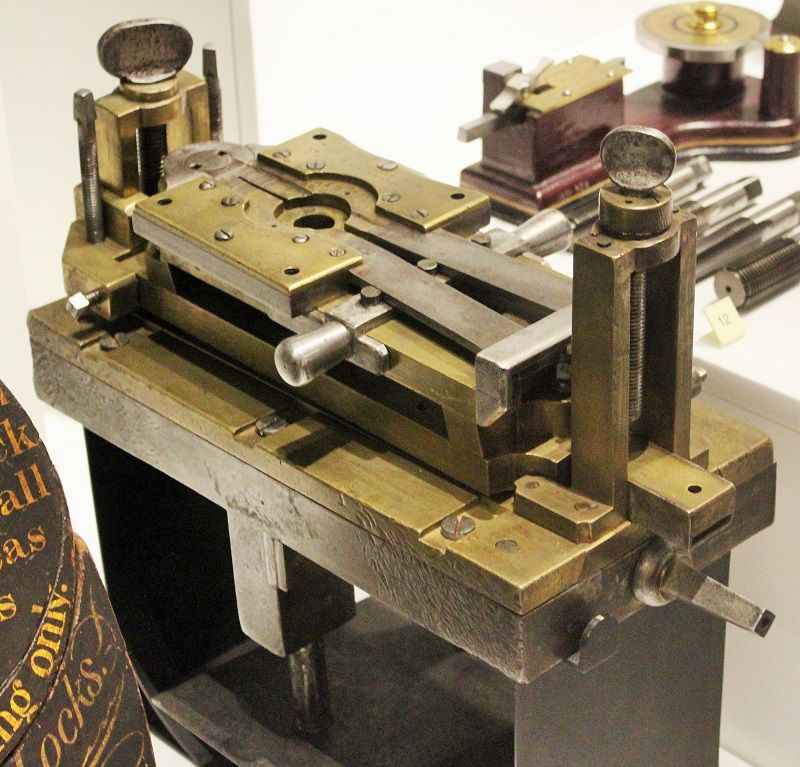
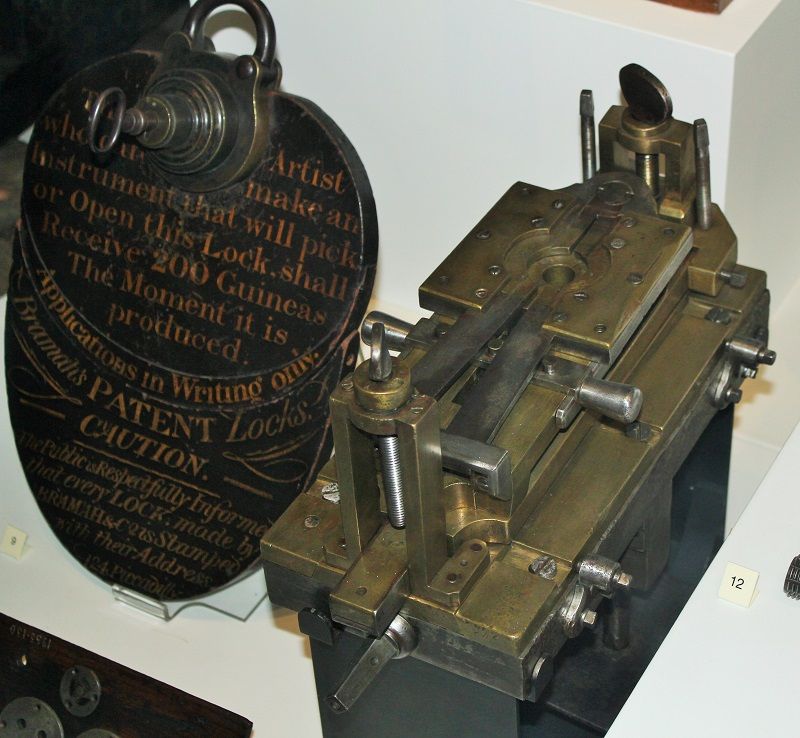
Joseph Bramah was responsible for some important developments in the late 18th/early 19th centuries. These included the hydraulic press, a large wood planing (milling) machine, high security locks, and beer pumps. I want to concentrate on his role in industrial machine tools.
In 1784 Bramah patented a lock which was extremely difficult to pick. He was responding to a dramatic increase in theft and burglary. His locks needed many components which had to be fairly accurately made.
In 1789 he took on a young Henry Maudslay to assist in mechanizing the various stages of manufacture. It is noted that large-scale production of the locks began the year after his arrival. Maudslay left Bramah in 1797.
Some of the lock-making machines, jigs, etc have been preserved. They are interesting as examples of late 18th century production machinery. We will never know the relative contribution of either Bramah or Maudslay.
In the context of the 'machine tool revolution', the machines themselves could not have had much direct influence at the time, as they worked in secrecy. However, we do know that Maudslay went on to have an enormous influence, partly because his own business was by no means secretive, his machines being very much in the public eye, and also because the Maudslay 'nursery' gave rise to important developments in the machine tool revolution of the first half of the 19th century, through Whitworth, Richard Roberts, Nasmyth, Muir, David Napier, Francis Lewis, and others. They were some of the most inventive and ambitious engineers of their time, and they didn't pitch up at Maudslay's by mere chance.
After leaving Bramah and before the arrival of those eminent pupils, Maudslay made machines which represented a major advance in engineering production – Marc Brunel's blockmaking production line at Portsmouth Dockyard.
I'm going to return to the blockmaking machinery later. I will also offer some information on the lock-making machinery. But first I'll focus on the item in the photos above, displayed at the London Science Museum.
It's title – Quick Grip Vice – underplays its role. It might be better described as part of a milling machine.
The cylindrical component is clamped in the recess, the jaws being tightened by pulling on the two steel or iron handles. A better photo here:-
http://cache4.asset-cache.net/gc/90770796-vice-made-by-joseph-bramah-to-be-used-gettyimages.jpg?v=1&c=IWSAsset&k=2&d=X7WJLa88Cweo9HktRLaNXmKi%2FnDEcxrJPlLUgXBvQGsWPWQFbvu%2FX2RoP5ZrqYtzXv1j%2BGAhGuqV7An0RPPqpZhtSM%2F0lgwE2GbC6sjlqA4%3D
The vice can be tilted, being pivoted at the far end. The pivots are attached to a bracket which can be raised vertically in guides. At the near end, a handle was presumably attached, and the vertical screw perhaps served to limit the vertical movement. Below there, we are on more familiar territory, with a square-ended leadscrew for a cross slide guided by dovetails. You can just see the angles of the dovetailed guides. These brass guides are screwed to a cast iron T-shaped baseplate. This was bolted to the bed of a lathe. The vertical leg of the baseplate has packers attached, no doubt to locate it in the jaws of the bed.
Rotating cutters, which we would nowadays call burrs or rotary files, were mounted on a mandrel running between centres. Here’s a photo:-
http://cache2.asset-cache.net/gc/90770763-made-by-joseph-bramah-bramah-made-numerous-gettyimages.jpg?v=1&c=IWSAsset&k=2&d=X7WJLa88Cweo9HktRLaNXhi9hB2bFr5c4LfEVhLO0ZTiCpp7FmrNFSz1kb%2FsQwRtER65E1jh3TUnknxhqSPZStKigXJE6M3ryjGhdFTS6I8%3D
What we have, then, is a sort of horizontal milling machine. I don't know what it was milling. One source says that the vice held 'the caps of the locks while the bolt run was slotted out' ('Joseph Bramah' by Ian McNeil, 1968). Presumably the depth of cut was set by the vertical screws, and the workpiece fed under the cutter by the cross-slide handle. I don't know how you'd ensure that the vice and workpiece were truly horizontal having made a height adjustment. That's one of the problems with these Bramah items: despite their apparent importance, they don't seem to have been addressed in depth.
More to follow.
Last edited:


